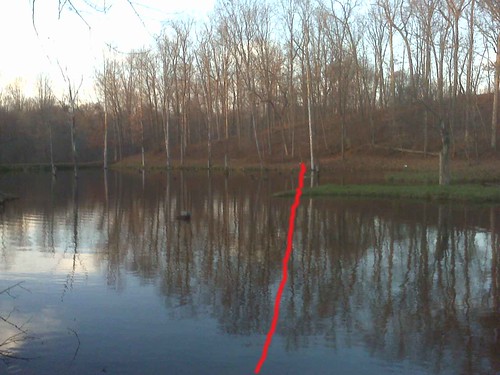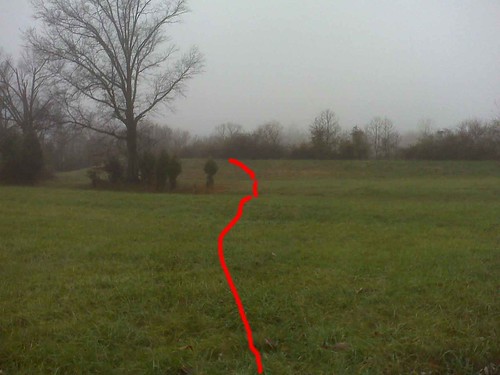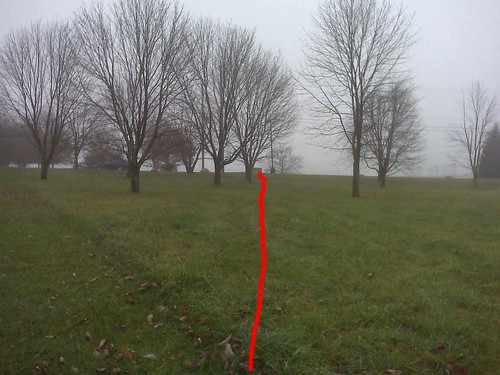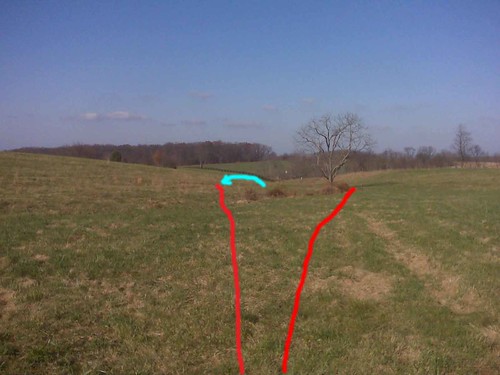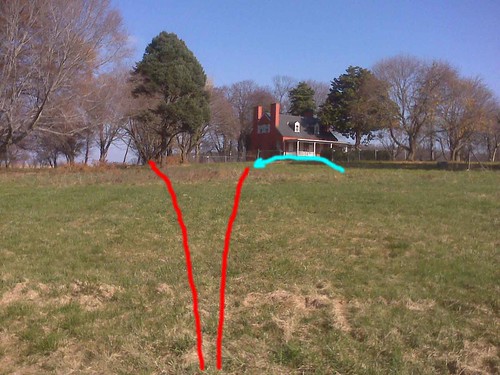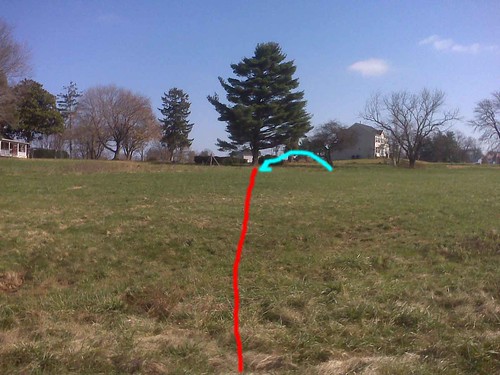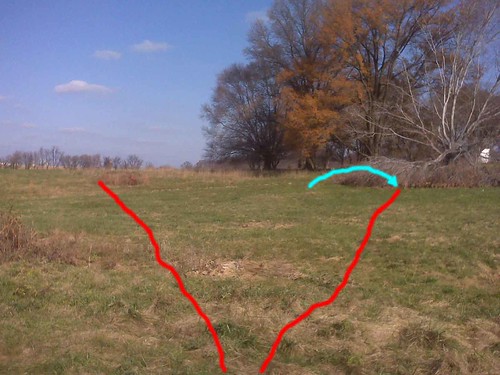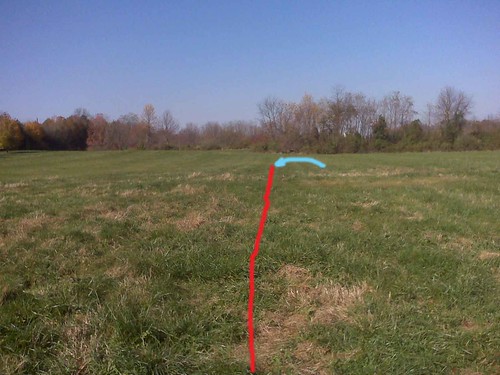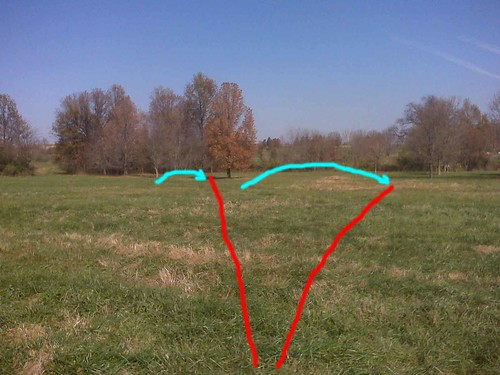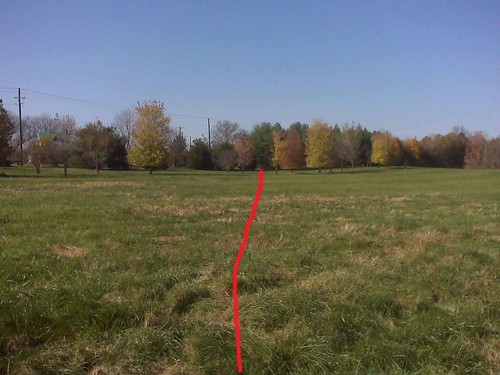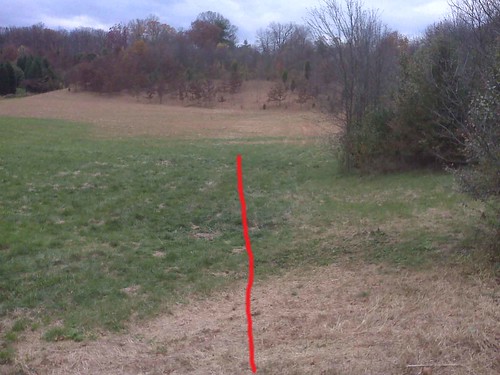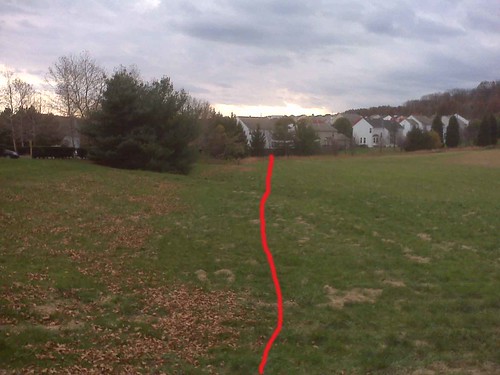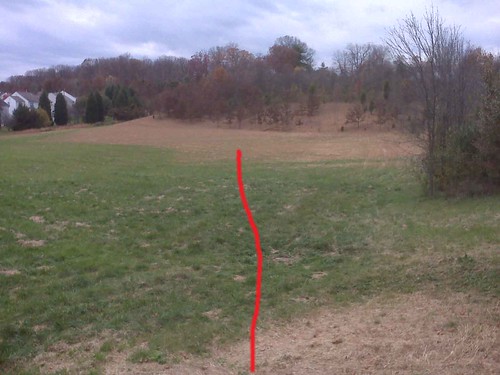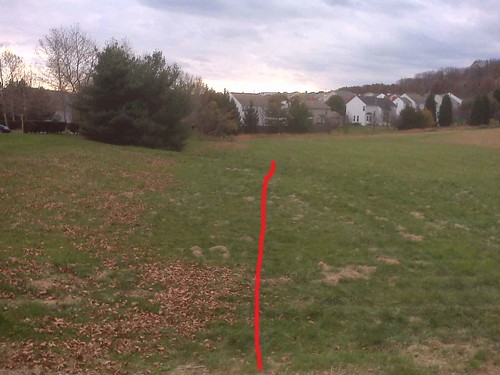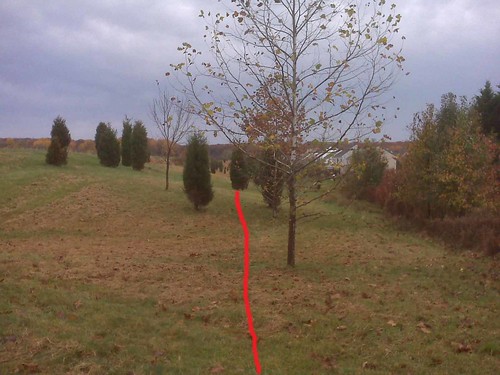During the last week, we've trained almost every day. We've trained three times at Cheltenham, once on a nearby field, and once, today, at Twin Ponds.
The day we trained on the field, Lumi and Laddie each ran a triple blind, 50-90-140 yards.
The other days were all land-water-land retrieves. I had given up on water work earlier this fall because the weather had gotten so cold, but it warmed up again and I'm seriously considering running them in a double Hunt Test in South Carolina in December. Accordingly, I felt we should focus on the one problem they both had in the last test, and that Laddie has had on a continuing basis, which is returning across water.
This week, I made a new change in our training procedure. The results have been so excellent that I wonder if the new procedure could have been used all along, but I'm not sure whether that would have been possible. If I ever train another retriever, I'll try it this way for sure.
The change was simply to forego any voice cues for recall. In the case of water retrieves with the bird on land, I wait for the dog to reach the duck and shake off, which both of my dogs invariably do when they get to the bird, or sometimes earlier as they get out of the water. When they are standing at the bird and have shaken off, I blow come-in whistle (CIW) one time. Our CIW has evolved to tweeeet-tweet-tweet-tweet.
For water retrieves with the bird in water (which have never been a problem) or at the shoreline, I blow CIW as soon as the dog is about to reach the bird.
Once I blow CIW, either the dog picks up the bird and comes back, or she doesn't. I give her a moment to pick up the bird, and if she doesn't do so, or if she does so but doesn't get back in the water, or if she does so but then puts it down again, I instantly call "sit" and walk around the shoreline to her. When I arrive, I slip on her lead, walk her gently back to the SL, and run her again. As I've mentioned in previous posts, I call this procedure of picking the dog up a Walk Out (WO). The important modification for this week's sessions was eliminating the voice recall, also continuing to drastically curtail tolerance for dawdling on the pickup and water re-entry.
I've used this procedure at least a dozen times with each dog. Laddie has had almost no WOs, while Lumi has had 4-5 WOs total. In not one instance has either dog required a second WO on the same retrieve, and both dogs have had fewer and fewer need for WOs as the week has progressed, with neither dog requiring a WO in either yesterday's session at Cheltenham or today's session at Twin Ponds. To me, that adds to the evidence that the WO has at least a short-term reinforcing effect on high-quality pickups and returns.
Eliminating the voice recall seems to have strengthened the effectiveness of the WO. Perhaps this is because it simplifies the context and response equation for the dog. Perhaps it's because the verbal recall acts as a reinforcer for the undesired behavior of dawdling, and eliminating that reinforcer has led in the direction of extinction of the dawdling. Perhaps some other force is at work. For whatever reason, it seems clear that use of a voice recall is detrimental to my dogs' performance, at least at this stage in their development.
We also continued with change I made a month ago, but it has only applied to Lumi, as it turns out. That change was to permit the dog to run the bank on returns, while still requiring a straight line from the SL to the bird. Laddie has not attempted this, though I would permit it, even encourage it, if he did so. Lumi, on the other hand, has taken advantage of this option several times, and it seems to have significantly improved her confidence and motivation. I only regret not teaching it to her earlier in her career. As mentioned in an earlier post, she would have earned her Senior Hunter title on our last test if she had known this option was available to her.
The photo below shows one of our more challenging and interesting retrieves over the last week. The distance is 100 yards, and the line requires the dog to go on and off one point, then past a second point on the right. Another challenge is that section of water on the far side of the first point is a stickpond with considerable underwater debris as well as tree stumps visible at the surface.
Lumi, running second, had great difficulty being handled into the stickpond, requiring many casts as she repeatedly tried to stay on the first point, veer right to the second point, or come back in toward the SL, all in order to avoid the stickpond. She did finally complete the retrieve, however, and had no difficulty with her return, on which she steered to the left side of the debris, then turned back in toward the first point.
When Laddie ran this retrieve, by contrast, he leapt into the water, accepted handling to keep him from veering too far right as he swam hard to the first point, took a WSC back off the first point with a second exuberant big air water entry, drove hard toward the lining pole with complete disregard for debris, decoys, tree stumps, leaves and any other diversion, grabbed the dummy (I had inadvertently left our ducks at home for this session), trotted back into the water, and swam straight back, again ignoring the second point and then crossing the first point, finally climbing out and cheerfully delivering his prize. I was stunned at the quality of his performance and how easy he made it look.
PHOTO OF ONE OF TODAY'S WATER RETRIEVES